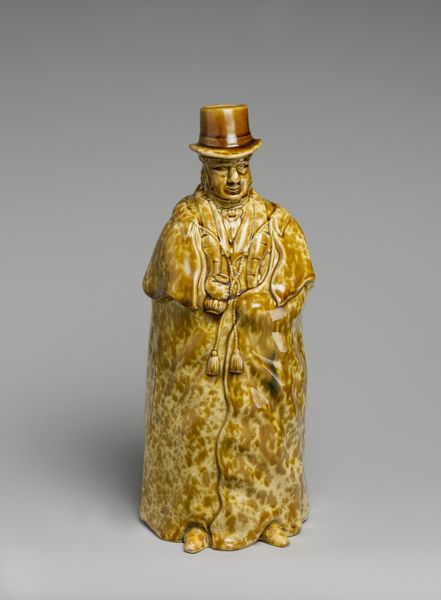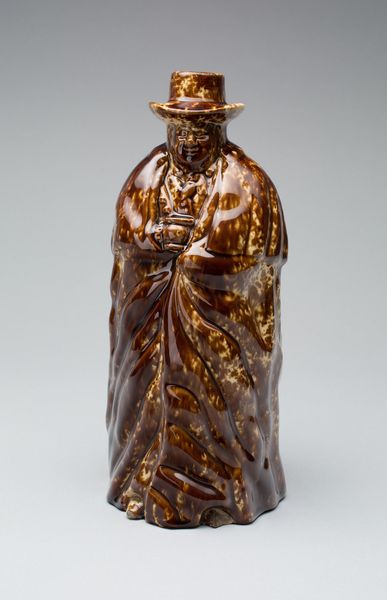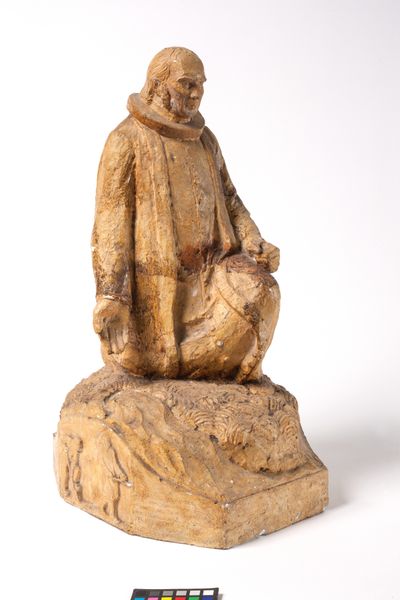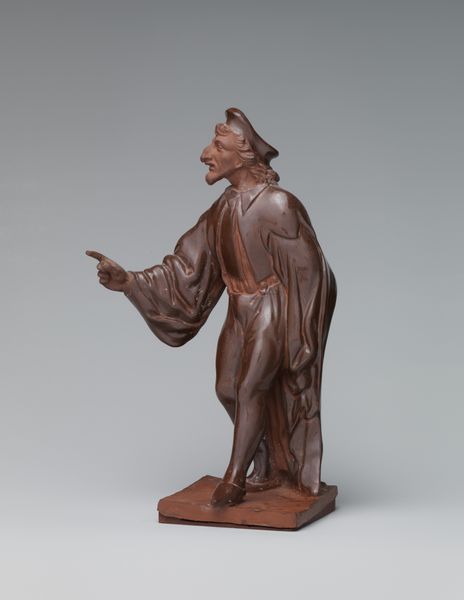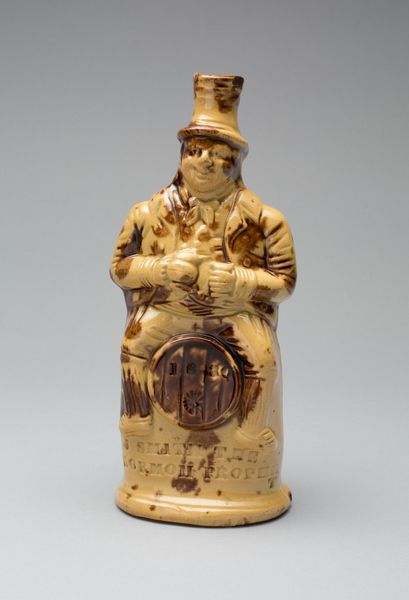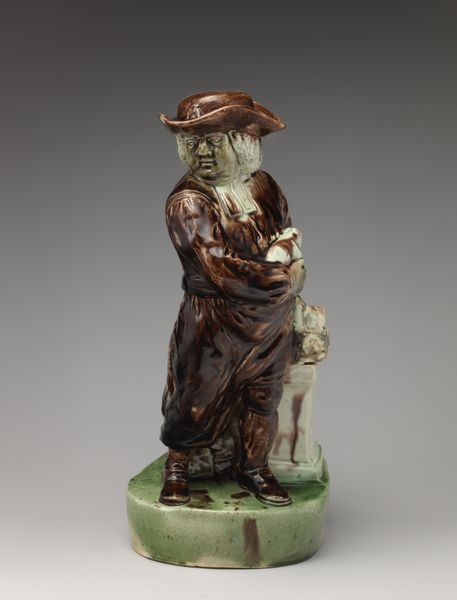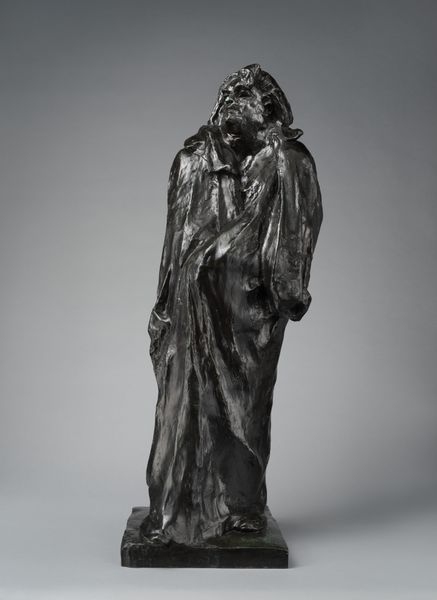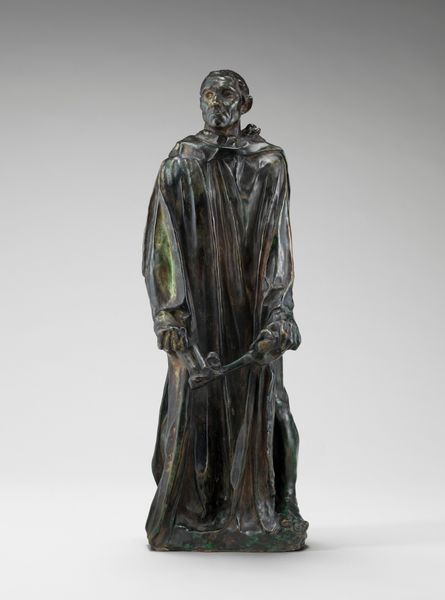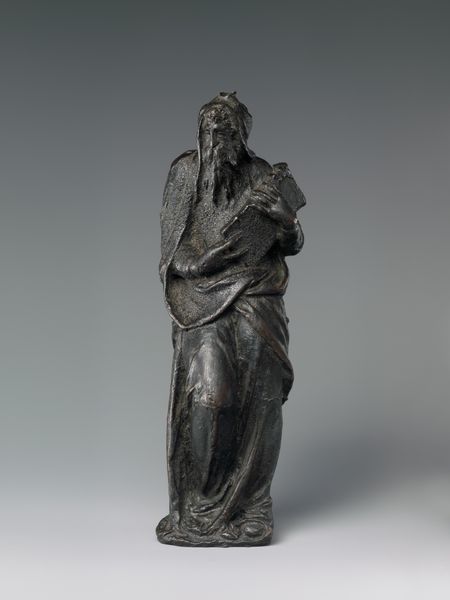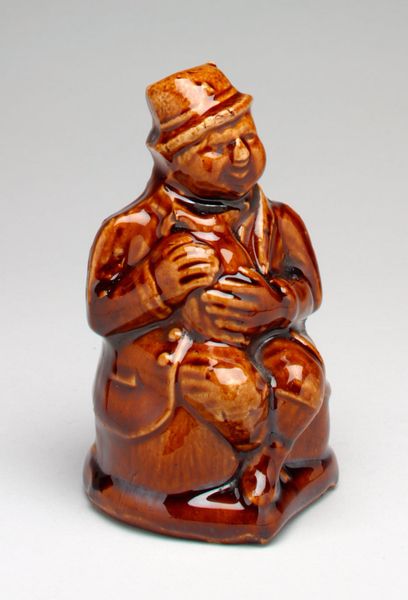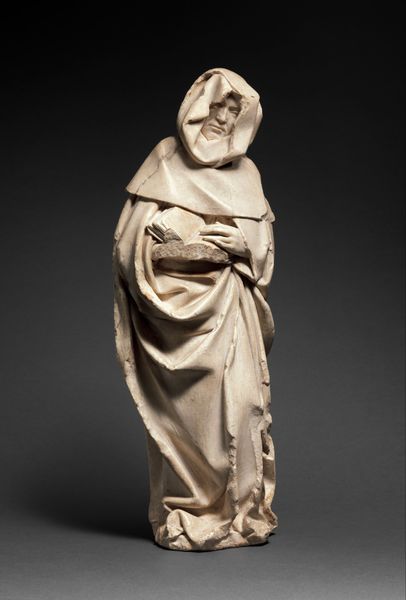
ceramic, earthenware, sculpture
#
ceramic
#
figuration
#
earthenware
#
stoneware
#
sculpture
#
ceramic
#
genre-painting
Dimensions: 10 1/2 x 4 1/2 x 4 1/2 in. (26.7 x 11.4 x 11.4 cm)
Copyright: Public Domain
Curator: Welcome. Let’s consider this remarkable ceramic piece, "Coachman Bottle," crafted around 1850. We believe it’s an anonymous work and utilizes earthenware, employing genre-painting and figuration, and it’s held at the Minneapolis Institute of Art. Editor: I love him! He seems so snug, a round little gentleman nestled inside a chocolate brownie! The glossy glaze makes him look edible, in a way. I wonder what secrets he'd whisper if this bottle could talk... Curator: His construction is key. This type of figural bottle emerged alongside the rise of industrial pottery production in the mid-19th century. Slip-casting, combined with a mold-pressed design and a shiny glaze fired to resemble Rockingham or a cane glaze, allowed for more standardized production but with personalized detail. The rise of American Staffordshire comes to mind, and it speaks to the new, expanding market of the period. Editor: Ah, so he's a product of his time, an affordable indulgence. I like that connection—it removes him from being purely aesthetic and plants him firmly within history. Still, look at the coachman himself! His puffy face and dignified stance are amusing. Did people actually drink from these? The sheer novelty of it! It's wonderfully impractical. Curator: Yes, many of these bottles originally held liquor. They often mirrored contemporary figures or types; political figures are most common, although one may encounter representations related to professions, social groups, and even stereotypes of marginalized communities. Note how labor practices shape consumption, and consumption expresses cultural assumptions. Editor: Thinking about this craftsman, and I am curious about their anonymous condition, and feel the creative investment. All the hours spent perfecting the mould, ensuring a uniform result yet hinting at unique detail with careful glazing. It's strangely affecting—all that unsung labor pouring into an object designed to be, quite literally, consumed. Curator: Indeed. These pieces demonstrate complex socio-economic currents. From production and availability of raw materials to technological processes. Even his anonymous creation emphasizes the loss of individualism as art transitions into mass appeal. Editor: Looking at the craftsmanship makes me consider the value we place on both "art" and everyday objects. Even this piece contains stories—it prompts such thinking, bridging utilitarian and artistic realms! Curator: Precisely. Let's appreciate “Coachman Bottle” as more than a container, it's a piece of cultural artifact rooted deeply in economic expansion. Editor: He’s charming in that he manages to convey that perfectly while serving liquor at the time!
Comments
No comments
Be the first to comment and join the conversation on the ultimate creative platform.

